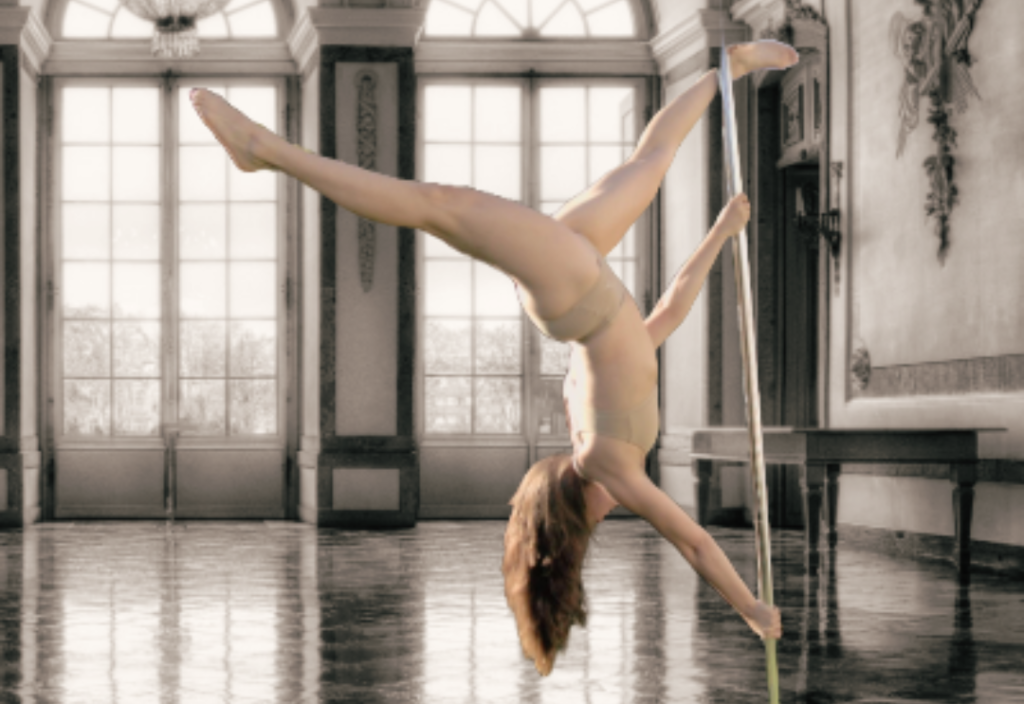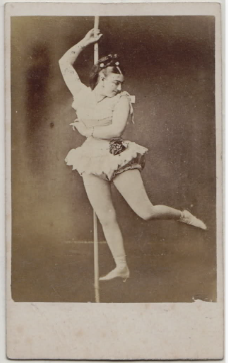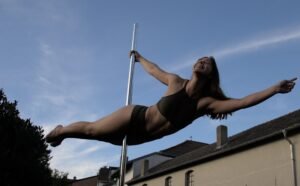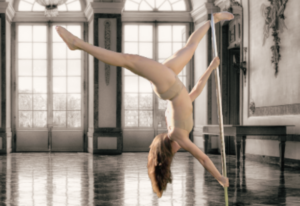Origins and Cultural Influences
The origins of this art form remain somewhat mysterious, but three key traditions have shaped its essence and significance over time. One of these is the ancient Indian practice of Mallakhamb.
Mallakhamb – 1st Century BCE
Mallakhamb is an ancient Indian sport and training method centered around wrestling on a wooden pole. Its name derives from the Sanskrit words malla (wrestler) and khamb (pole), literally meaning “wrestling pole.” This practice dates back to the 1st century BCE and was initially developed as a training tool for warriors and wrestlers to enhance their strength, agility, and coordination.
The pole, traditionally made of polished teak or sheesham wood, measured 3–4 meters in height with a diameter of 35–55 cm. It served as a vital training apparatus for Maratha warriors, who were known for their expertise in guerrilla warfare. Wrestlers would perform acrobatic maneuvers and yoga-inspired poses on the pole to build physical endurance and refine their combat skills.
Over time, Mallakhamb evolved into a competitive sport with variations such as rope Mallakhamb and hanging Mallakhamb. Despite its ancient roots, it continues to inspire modern gymnastics, yoga practices, and even pole fitness worldwide.
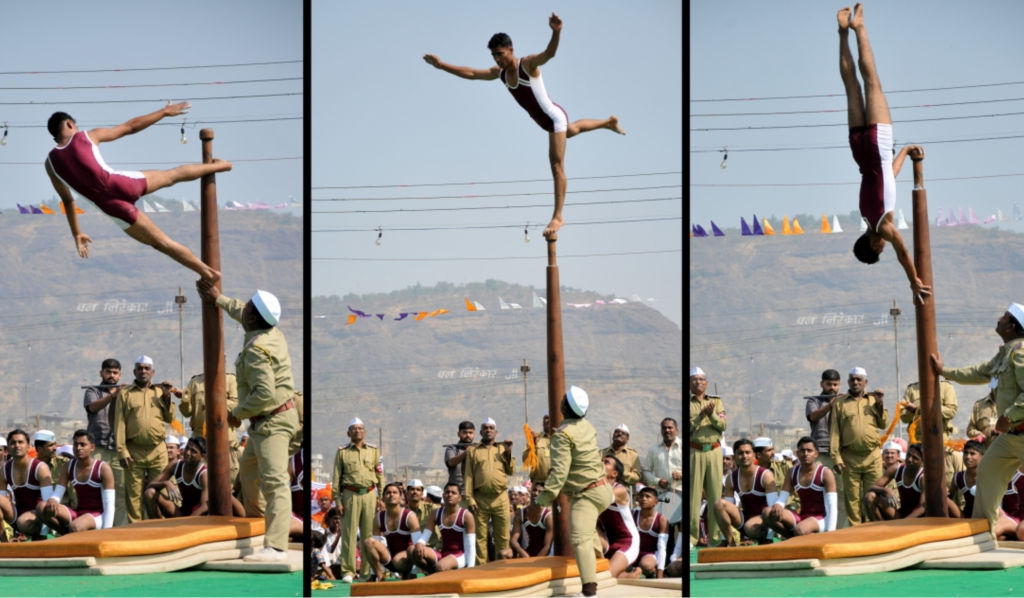
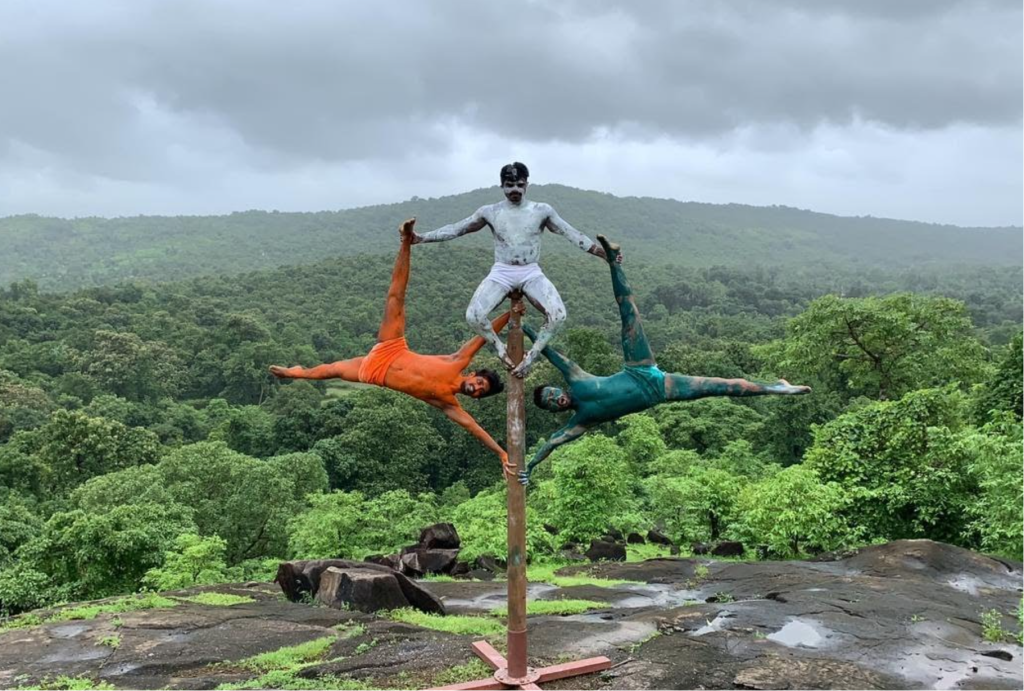
The Ancient Art of Mallakhamb: From Combat Training to Modern Mastery
The roots of the ancient Indian art of Mallakhamb trace back to the 1st century BCE, with its existence documented through intricate drawings on pottery. However, it wasn’t until the 17th century that Mallakhamb gained official recognition under the reign of Maratha King Peshwa Bajirao II. Originally practiced as both a martial art and a training method for royal soldiers, Mallakhamb evolved into a discipline that demands agility, balance, and unwavering focus.
In 1936, this captivating art form made its European debut during the Berlin Olympics, showcasing its unique blend of athleticism and artistry to a global audience.
Chinese Pole: A Tradition of Strength and Skill Since the 12th Century
In ancient China, as far back as the 12th century, acrobats began performing intricate routines on vertical poles made of bamboo or wood. These performances required extraordinary physical strength, precision, and coordination. Beyond entertainment, pole training also served military purposes, with warriors practicing complex maneuvers to build resilience and agility.
One iconic move involved pushing off the pole at a 90-degree angle—a technique now famously known as the “human flag.” Unlike its Indian counterpart, Chinese poles typically reach heights of 5 to 9 meters and are often used in pairs, enabling performers to leap from one pole to another. Modern versions are coated with rubber, allowing performers to execute their routines while wearing clothing.
This tradition has left an indelible mark on Chinese circus culture and continues to inspire awe with its combination of athleticism and artistry.
Native American Ritual Dances: A Spiritual Connection to the Pole
The third tradition takes us to Native American ritual dances around poles, offering a glimpse into a world rich in sacrifice and spiritual depth. While the exact origins remain unclear, these dances were first documented in 1890. They were as intense and symbolic as their Indian counterparts, reflecting themes of war and resilience.
Unlike Mallakhamb or Chinese Pole performances, Native American pole dances—such as the “Stalptanz” (Pole Dance)—were traditionally performed by women. In this victory dance, women celebrated their warriors by dancing around a pole adorned with trophies.
On the other hand, the Sun Dance was a deeply spiritual ritual performed by men. This multi-day ceremony involved fasting and acts of self-sacrifice around a wooden pole. It was an intense display of devotion and endurance that held profound cultural significance.
Each of these traditions—Mallakhamb, Chinese Pole, and Native American ritual dances—offers a unique perspective on how poles have been used throughout history for strength training, spiritual expression, and artistic performance. Today, they continue to inspire modern interpretations while honoring their ancient roots.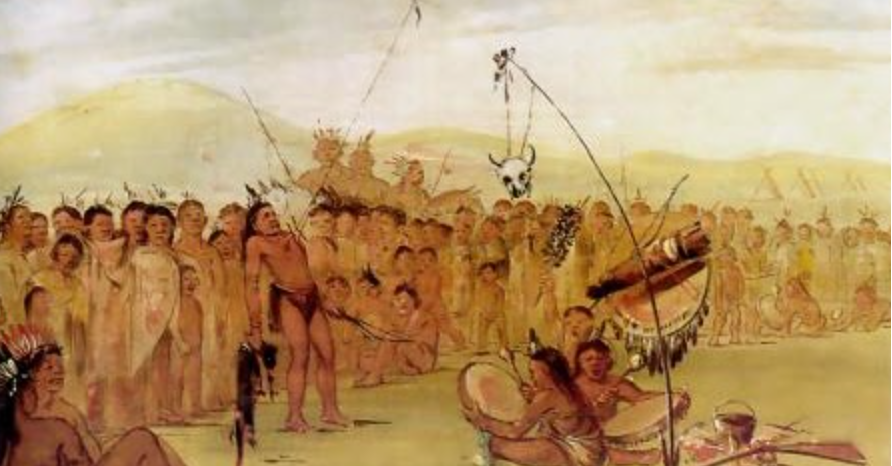 The Sioux dancers are said to undergo self-torture and enter a trance during the ritual to receive visions and sacrifice themselves for their people. However, this ritual differs from tribe to tribe and is not always as extreme as it is among the Sioux.
The Sioux dancers are said to undergo self-torture and enter a trance during the ritual to receive visions and sacrifice themselves for their people. However, this ritual differs from tribe to tribe and is not always as extreme as it is among the Sioux.
Entertainment Sector Development
The Beginnings: Pole Dance in the Circus (1920s)
In the 1920s, dancers in the United States dared to incorporate tent poles into their performances, introducing a fresh dimension to traditional circus acts. By blending elements of belly dancing, pole dance gained a feminine and sensual flair that captivated audiences. This bold innovation marked the first step in the transformation of pole dance into an art form.
Nightclubs and Burlesque: A New Home for Pole Dance (1950s-1970s)
By the 1950s, pole dancing found its way from circus tents into vibrant bars and nightclubs, where it became a staple in burlesque shows. During the 1970s, pole dancing shifted further into strip clubs, reaching its peak popularity. Fixed poles became a common feature in clubs, solidifying pole dance as an essential part of nightlife entertainment.
Establishing Pole Dance as a Sport and Art Form
The First Pole Dance School in Canada (1994)
Fawnia Mondey, a Canadian dancer, was instrumental in redefining pole dance as both a sport and an art form. In 1994, she opened Canada’s first pole dance school and, by 1995, offered classes specifically for non-strippers. As the world’s first official pole dance instructor, Fawnia played a pivotal role in moving pole dance out of strip clubs and into fitness studios and performance spaces. Her passion helped pave the way for global recognition of pole dance as a holistic physical and artistic practice.
Learn more about Fawnia here: officiallyfawnia.com
Sheila Kelley & the S-Factor (2000)
In 2000, actress Sheila Kelley founded S-Factor Studios, introducing a unique approach to pole dance that emphasized femininity and emotional exploration alongside physical fitness. This innovative perspective revolutionized pole dance once again, offering women new opportunities to embrace their sensuality and strength.
Recommended viewing: Netflix documentary “Strip Down, Rise Up”
More on Sheila Kelley’s S-Factor: sfactor.com
The Pole Dance Boom & Competitions (2003)
Between 2003 and 2005, pole dancing experienced an explosive rise in popularity thanks to Hollywood celebrities and pop icons showcasing it as a workout in magazines and on TV. Around this time, digital platforms like YouTube began hosting instructional videos, making pole dance accessible to a global audience.
Europe also embraced pole dance with the opening of its first studios in 2003—starting in England, where burlesque schools had already been established since the 1990s. The same year marked another milestone: the first official pole dance competitions were held globally. These events showcased diverse formats and attracted participants from all over the world.
In Germany, Nele Sehrt pioneered pole dance classes in Hamburg in 2004. Her expertise inspired countless instructors and students, laying the foundation for Germany’s thriving pole dance community.
The Birth of IPSF (2009)
The International Pole Sports Federation (IPSF) was founded in 2009 with one ambitious goal: to establish pole dancing as an Olympic discipline.
Pole Dance Officially Recognized as a Sport (2017)
In fall 2017, the Global Association of International Sports Federations officially recognized pole dance as a sport with observer status—a historic achievement for the community. This milestone marked significant progress toward acceptance by National Olympic Committees worldwide.
Final Thoughts
As adults, we often associate poles with complex emotions or societal expectations. Yet if we look back to childhood memories—climbing playground poles or pretending to be firefighters—we recall moments of pure joy and playfulness. Back then, poles were simply tools for fun.
Over time, societal influences have sexualized poles or attached stigma to them. But is this their true purpose? Historically, pole exercises transcended gender stereotypes and served as training tools accessible to all.
Perhaps it’s time to shift our perspective—to see poles not as symbols of shame or allure but as instruments of strength, courage, and shared joy. Let’s rediscover their essence as sources of inspiration and unity.
With love,
Riva 🙂
Further Reading:

